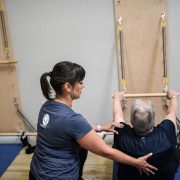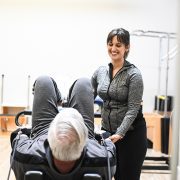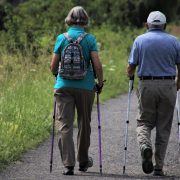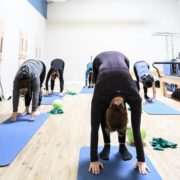3 Reasons Your Lower Back Stretches Aren’t Working
If you suffer from chronic lower back stiffness or pain – and you’ve been diligent with your stretching routine – it might be time to re-evaluate your approach.
Whether it’s your stretching technique, the type of stretch, or even the idea that you might not need to stretch at all, it’s important to understand why your current regimen might not be helping.
Here are three common reasons why your lower back stretches might not be working and how to address them:
1. You’re using the wrong stretching technique.
Research varies on how long to hold a stretch, but many people find that holding a stretch for 30-60 seconds is effective. However, technique is everything. One common mistake is not fully relaxing into the stretch. It won’t be effective if you’re holding tension in your body or gripping your muscles as you stretch. Make sure you’re breathing deeply and easing into each movement. Forcing the stretch or pushing through pain can trigger muscle tension and defeat the purpose.
If you’ve relaxed fully and your stretches still don’t seem to work, consider trying “dynamic” or “moving” stretches. Rather than holding one static position, move gently through a series of stretches, like pelvic tilts or cat-cow stretches. These can help your muscles stay loose without becoming rigid. Adjusting your stretching approach can make a noticeable difference and reveal that your technique might have been the issue.
2. You’re doing the wrong type of stretch.
Determining the right type of stretch can be tricky without expert guidance. There’s a distinction between general stretches meant for relaxation and specific corrective stretches for targeted issues.
For example, let’s say your lower back tightens up after a long day or due to stress, general stretches like a child’s pose or a seated forward fold may relieve tension. I often use these stretches to keep my own back healthy when I’m on my feet all day helping patients.
However, if you’re dealing with lower back pain or symptoms like sciatica (pain or tingling running down your leg), generic stretches like these might not help and could even worsen your condition. In these cases, corrective stretches tailored to your specific problem are necessary. These stretches are usually prescribed by a specialist who considers your body mechanics and underlying issues, recommending the best type and frequency for you.
3. You shouldn’t be stretching your lower back at all.
One surprising reason your lower back stretches might not be helping is that you may not need to stretch it in the first place. Chronic lower back tightness can sometimes indicate a weak core or hip instability.
This is more common than you might think, and if this is your situation, stretching your back repeatedly can lead to more frustration and even worsen the problem. The deep stabilizing muscles in your lower back are closely connected to your core muscles. If your core isn’t functioning properly, your lower back muscles might compensate, leading to persistent tightness and discomfort.
Ever notice your lower back feels sore after a day of ab exercises or after certain workouts? This could be a sign that your lower back is overcompensating. Instead of stretching more, it’s time to focus on core strengthening and proper movement techniques. Seek guidance from a specialist to assess and correct your form and make sure your core is doing its job.
Lower back pain is common – but having to constantly suffer from it isn’t. If your lower back pain or tightness isn’t improving despite regular stretching – it’s possible that your technique needs adjusting, you’re using the wrong type of stretches, or stretching isn’t what your body needs at all. Finding the root cause of your lower back issues is key.
Consulting with a physical therapy specialist who is an expert in mechanical pain can help you identify the root cause of your back pain and the best course of action – so you can stop wasting time on ineffective stretches and get back to your favorite activities without pain. Need help finding one? Reach out – I’m happy to help.
Are you local to Portsmouth, NH?
Book a free discovery visit with one of our specialists HERE. Our team will listen to your story and help you make the best decision moving forward – whether that means working with us or finding the right plan for you 🙂











